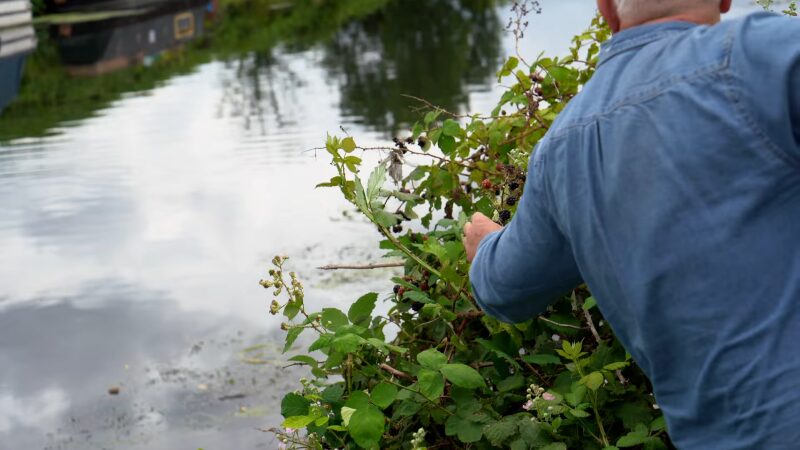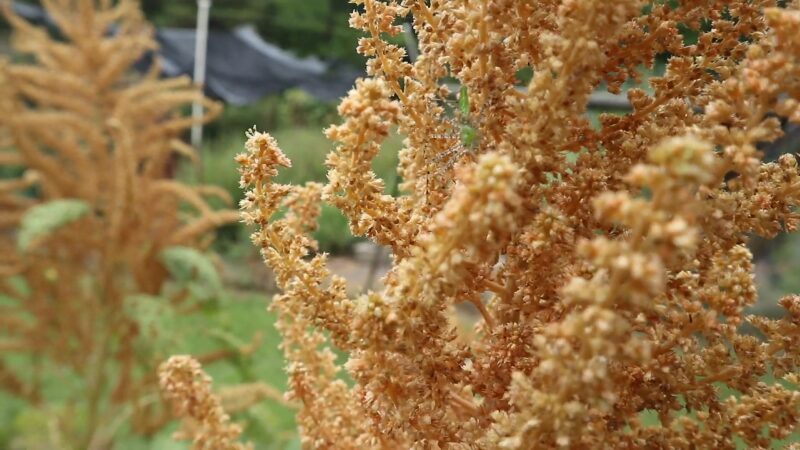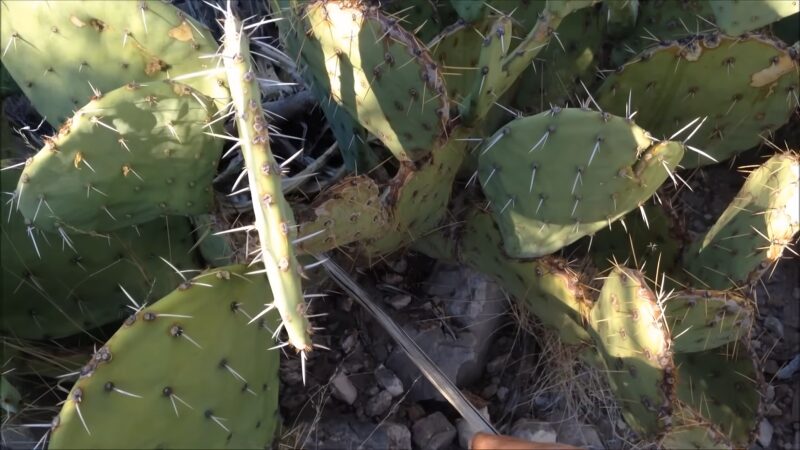Once you get into the world of wild, edible plants and fungi, you might be amazed to find out you’ve been strolling through nature’s pantry all along.
Everywhere you go, there’s a good chance you’ll spot all sorts of edible goodies—berries, seeds, flowers, nuts, roots, and leaves.
Some plants are even entirely edible!
Whether you’re foraging just for the fun of it, looking to spice up your backpacking meals, or want to have some survival skills up your sleeve, this guide is your starting point for finding food in the wild.
Safety

Before you head out to forage, it’s crucial to arm yourself with some know-how. Make sure you can identify plants before munching on them—don’t just assume something’s edible because it looks tasty. Not all plants are safe to eat, and some harmless and toxic ones can look nearly identical. If you’re unsure, it’s best to err on the side of caution and not eat it.
Always have a reliable guidebook with you that shows pictures and descriptions of edible plants. A book focused on your local area is even better. At the end of this article, I’ve listed some recommended books to kickstart your foraging journey.
In case you find yourself in a survival situation, like getting lost on a hike and running out of food, knowing the Universal Edibility Test can be a lifesaver. This test, however, doesn’t apply to mushrooms—only eat mushrooms if you’re absolutely certain of their identification.
Rules to Follow When Foraging
Whether you’re just starting out or have been foraging for years, these basic guidelines are key to a safe and enjoyable experience:
- Don’t assume safety based on animals: Just because an animal can eat something doesn’t mean it’s safe for humans.
- Family foraging safety: Foraging can be a blast for everyone, but always make sure kids don’t eat any plant parts without your okay.
- Trust your nose: If a plant has a strong, unpleasant smell, steer clear. Crush the leaves and take a sniff if there’s no initial odor.
- Beware of threes: Avoid plants with leaves growing in groups of three, like poison ivy.
- Mind the location: Stay away from plants growing along busy roads or in developed areas, as they could be polluted or treated with pesticides. Wash thoroughly if you do collect from these areas.
- Cooking counts: Some plants shouldn’t be eaten raw or taste better cooked. Learn the proper way to prepare your foraged finds.
- Check the freshness: Don’t eat fruit or berries that look like they’re spoiling.
- Try new foods slowly: Introduce new wild foods one at a time. Allergic reactions can happen, so it’s good to know what might be causing them.
- Start small: Eat a small amount of any new plant first and wait a while to make sure you don’t have a bad reaction.
- Leave No Trace: Like any outdoor activity, always follow Leave No Trace principles to keep nature as pristine as you found it, or even better.
10 Plants that Are Edible
These plants are pretty easy to spot and have at least one part you can safely eat. When you start foraging around your area, these might be present, but if not, they can all be found somewhere in the U.S.
If you’re ever exploring the Haunted Trails in Los Angeles, keep an eye out for some of these edible plants. Make sure to grab a local guide for wild, edible plants to get detailed ID tips and pick a few favorites, to begin with.
10. Amaranth

Thriving in temperate climates, amaranth is considered a weed by some and a superfood by others.
Both the small seeds and the leaves are edible.
The seeds are packed with protein and nutrients, making them a staple in traditional diets for thousands of years, notably by the Aztecs of Mexico. The leaves can be eaten raw or cooked, while the seeds should be boiled or roasted before consumption.
9. Chicken of the Woods
This mushroom is easy to spot when young with its bright orange color and yellow edges. It grows in shelf-like clusters on living or decaying trees across North America.
The meaty mushroom itself is edible.
Slice it up and add it to your camp meal, but make sure to harvest younger specimens and cook them thoroughly to avoid stomach issues. Be cautious with those growing on eucalyptus and conifers, as they can cause adverse reactions in some people. Try a moderate amount first to ensure you don’t have a reaction.
8. Blackberries

Blackberries can be found growing in fields or along stream sides throughout warmer parts of the U.S. during the summer.
The berries themselves are a fantastic source of vitamins, nutrients, and antioxidants.
- Harvesting Tip: Be sure to wear gloves and long sleeves when picking them, as the shrubs have sharp thorns. Identifying edible berries is essential since some can be poisonous, but blackberries are a safe and tasty option.
7. Rose Hips
When you come across a rose bush, you’ve hit a jackpot of edible options. Besides the lightly sweet petals, the small accessory fruits called rose hips are also edible.
Rose hips are small, orange, or red fruits that are packed with vitamin C.
You can eat rose hips raw or turn them into jelly, sauce, or tea. Just make sure the bush hasn’t been treated with chemicals if you’re harvesting in a populated area.
6. Dandelion

Native to Europe, the dandelion has become an invasive species elsewhere. Despite its pervasive nature, it’s entirely edible.
The leaves are highly nutritious, especially rich in vitamins A and K, but are best eaten young to avoid bitterness. Older leaves and roots should be boiled to improve taste. The yellow flowers can be eaten raw as a snack or added to salads for a splash of color.
5. Chickweed
Chickweed, or Stellaria media, is easy to spot with its small, white, star-shaped flowers that look like they have ten petals due to deep cuts. It thrives in yards, grasslands, forests, and roadsides.
This leafy green plant is simple to identify and is commonly found throughout Europe (where it’s native) and the United States.
4. Pine Nuts
Pine nuts, which are actually seeds, are nestled inside pinecones. They’re tiny in most species, so look for trees with larger seeds, like the pinyon pines found throughout the American Southwest.
The seeds themselves are what you’re after.
3. Morel
Morels are highly sought-after, delicious mushrooms that pop up in the springtime all across the United States.
They have distinctive features, but it’s crucial to ensure you’ve found a true morel and not a “false morel,” which is mildly toxic and can look similar if you’re not experienced.
2. Prickly Pear Cactus

Even in the desert, you can find edible plants like the prickly pear cactus. It’s commonly found in arid regions, especially in the American southwest and Mexico. Look for its distinctive paddle-shaped arms and bright magenta fruits.
Both the fruits and the pads (also called nopales) are edible, but you need to remove the spines and peel the skin first.
Many people love using the fruit to make a deliciously pink and refreshing juice.
1. Nasturtium
Before venturing deep into the wild, try foraging close to home and keep an eye out for nasturtiums. These vibrant flowers, which can be orange, yellow, or red, have a distinct peppery taste and are commonly found in parks, gardens, and even street-side flowerbeds.
Every part of this plant is edible, including the leaves and seeds. Packed with vitamins, it’s a great starter plant for new foragers.
And Ones You Should Avoid
You shouldn’t eat anything unless you know what it is, but it’s good to know how to identify poisonous plants. Some of the plants mentioned below are common in backyards or landscaping as well as the wild, so being familiar with them can help keep curious pets or children safe.
Death Cap Mushroom

Amanita phalloides, or Death Cap, is a deadly mushroom that looks harmless and even tastes good. However, it’s responsible for about 90% of the world’s deadly mushroom poisonings.
Originally from Europe, it’s now found throughout the U.S. and other continents as an invasive species.
Monkshood
Known by several names, Monkshood is most recognized by its hood-like flower shape. It’s also called Queen of Poisons due to its deadly toxin, aconite, present in all parts of the plant.
Found in mountain meadows in the Northern Hemisphere.
Horse Nettle

Related to tomatoes and eggplants, its mature fruits resemble yellow cherry tomatoes but are poisonous.
Native to the American South, it poses a threat to grazing animals and humans alike.
Doll’s Eyes
Also called White Baneberry, it produces white berries with black dots that look like doll’s eyes, sprouting from neon-pink stems.
Found in forests throughout the eastern United States.
Hemlock

Known for killing Socrates, hemlock has lacy green leaves and small white flowers, resembling wild carrots or parsnips.
Though not native, it grows commonly near streams or roadsides in North America.
Oleander
Attractive with sweet-smelling flowers, but every part is toxic and can cause severe symptoms or death.
Common in ornamental gardens in sunny places like California, Texas, and Florida.
Poison Ivy

Recognizable by its “leaves of three,” it causes an itchy rash in humans.
Common in forests, fields, and parks across most states.
Lantana
A woody shrub with brightly colored flowers and mint-like leaves that are fragrant when crushed.
Native to the American tropics, it’s cultivated in warm areas.
American Wisteria

Known for its aromatic clusters of flowers and bean-like pods containing toxic seeds.
Native to the eastern United States.
Manchineel
Known as “the tree of death,” its caustic sap causes blistering, and its green fruit can be fatal if eaten.
Found in southern Florida, the Florida Keys, and parts of the Caribbean, Mexico, and Central America.
Related Posts:
- Foraging for Food in the Wild - A Beginner’s Guide…
- Can You Eat Grass if You’re Starving? Survival Tips…
- Eaton Canyon Falls - Hiking Tips and Trail Information
- The Best Catfish Rigs - Blue and Flathead Essentials
- How to Make a Homemade Bow and Arrow Easy? No Fancy…
- Winter Hiking Clothes - Must-Have Items to Keep You…

